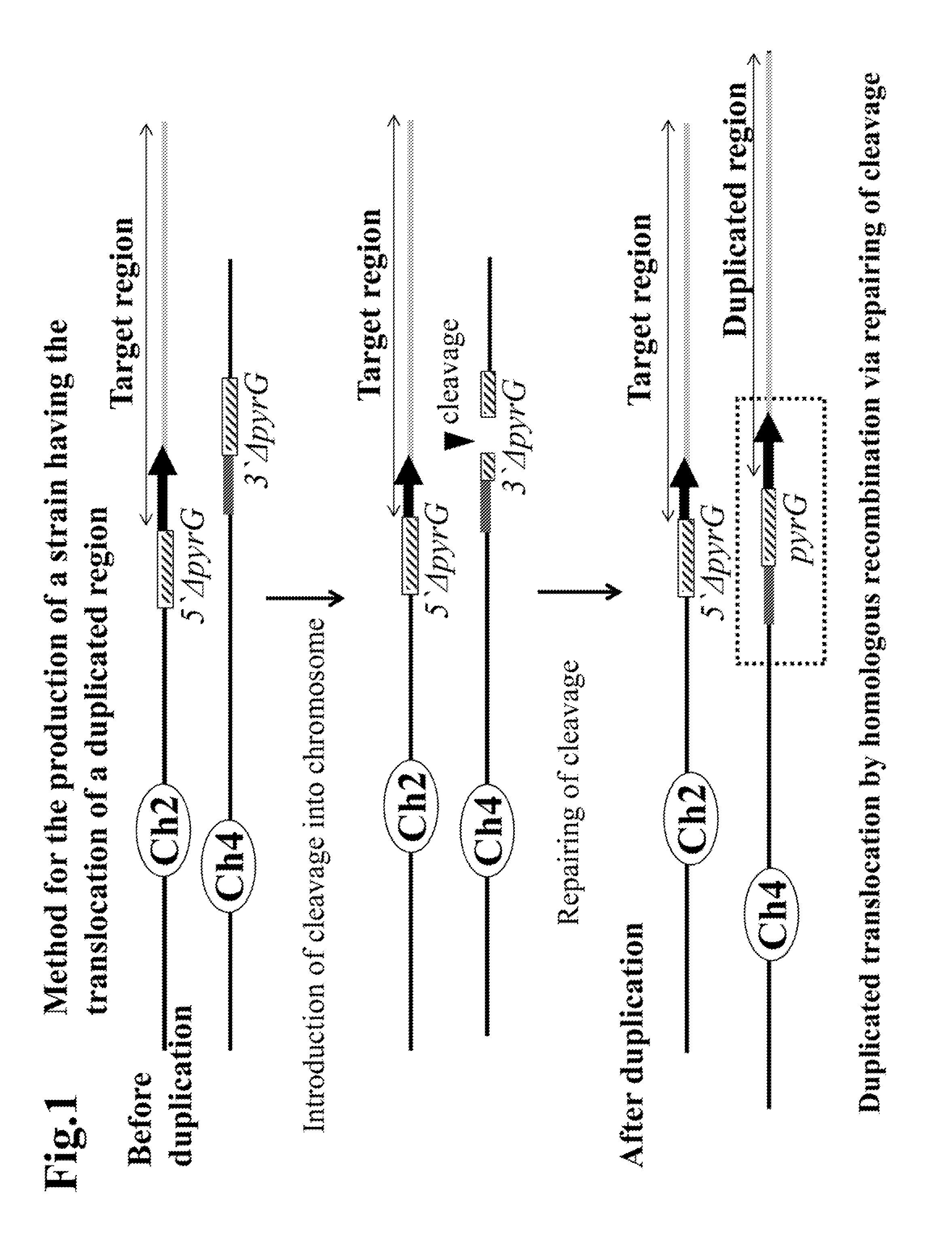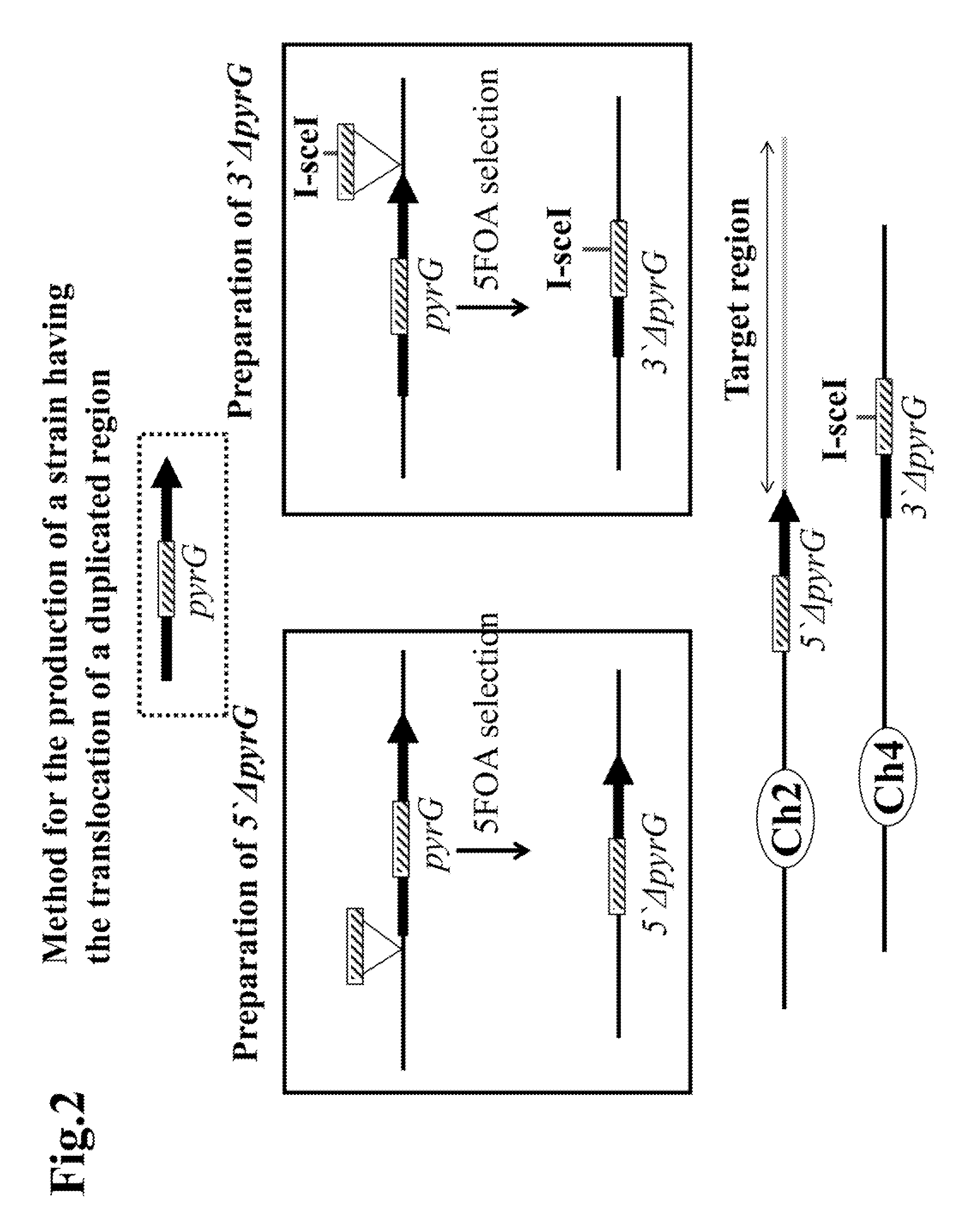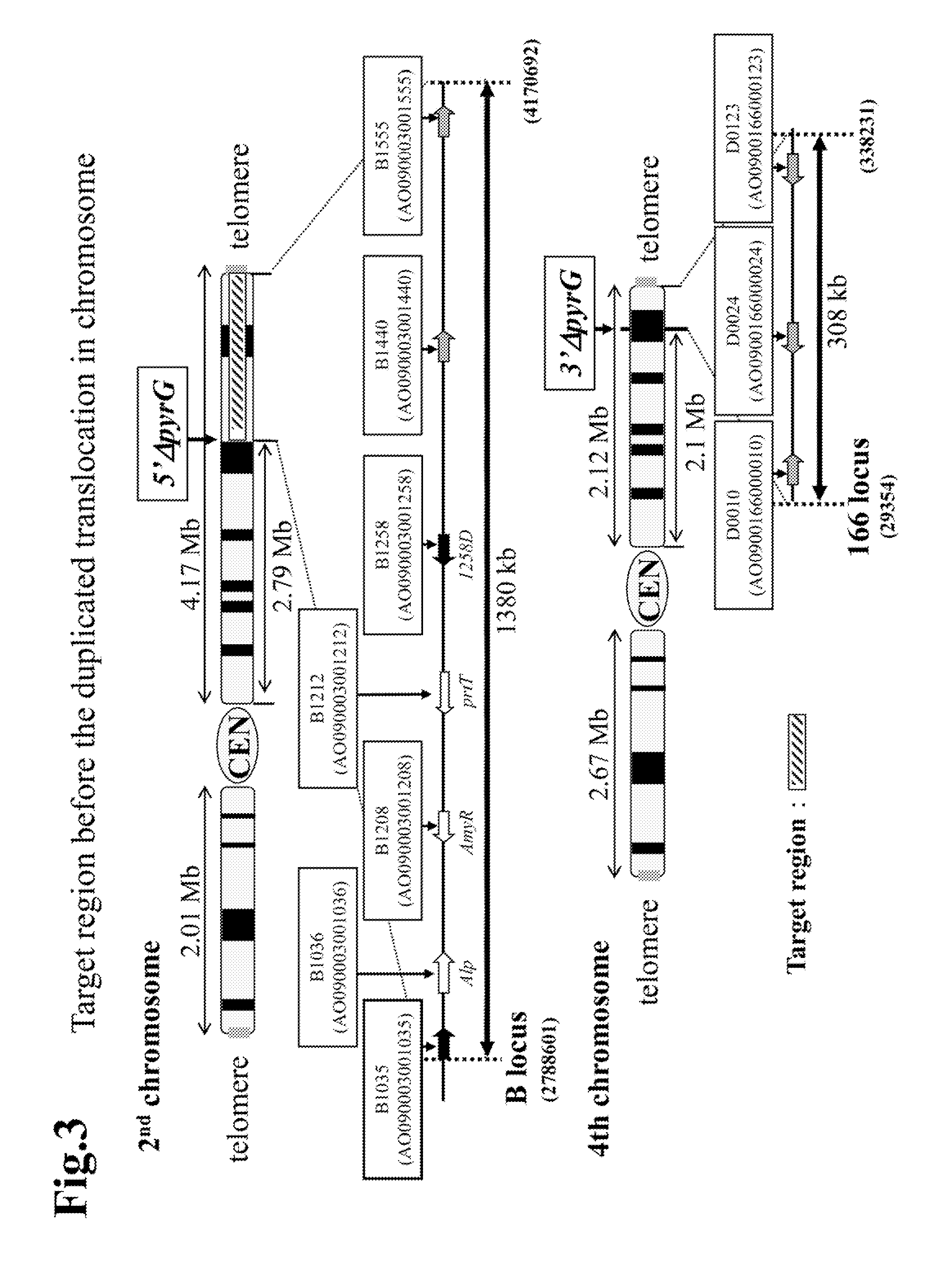Method for the production of duplication and translocation of any region in the chromosome of aspergillus
a technology of aspergillus and duplication and translocation, which is applied in the field of duplicated translocation of anoptional large region, can solve the problems of inability to produce, difficult to study their genetics, and the mechanism of such duplication of the chromosome has not yet been revealed, and achieves stable duplication translocation
- Summary
- Abstract
- Description
- Claims
- Application Information
AI Technical Summary
Benefits of technology
Problems solved by technology
Method used
Image
Examples
example 1
Production of the Strains Having the Translocation of the Duplicated Region in its Chromosome Due to Ultraviolet Irradiation
[Construction of the Transformant]
[0104]The region subject to the duplicated translocation was a 1,380 kb region comprising a part corresponding to the ORF regions of A0090003001035˜A0090003001556 in SC003 region of the 2nd chromosome of Aspergillus oryzae (a shaded area in FIG. 3). This region was duplicated and translocated to the telomere side of a boundary region between A0090166000009˜A0090166000010 (166 locus) in SC166 region of the 4th chromosome. Vectors for integrating 5′ΔpyrG into the B locus and 3′ΔpyrG into the 166 locus, respectively were constructed for the above purpose. Just for the purpose of simplification, the part of “A0090003000” of each gene is hereinafter abbreviated just to “B.” Thus, for example, “A0090003000160” is abbreviated into “B0160.” Similarly, the part of “A0090166000” of each gene is hereinafter abbreviated just to “D.” Thus, ...
example 2
Production of the Strains Having the Translocation of the Duplicated Region in its Chromosome Due to Site-Specific Cleavage
[0127]The production of the transformant, preparation of the 5′ΔpyrG and 3′ΔpyrG, and construction of a vector for integrating 5′ΔpyrG unit into the B locus in the 2nd chromosome were carried out in the same way as in Example 1.
Construction of a Vector for Integrating 3′ΔpyrG Unit into the 166 Locus in the 4th Chromosome
[0128]Then, the vector for integrating 3′ΔpyrG unit into the 166 locus in the 4th chromosome was constructed as follows.
[0129]A DNA fragment of 3 kb comprising a part adjacent to the B locus was obtained with PCR using the primers 166-U and 166-L and the genomic DNA of Aspergillus oryzae RIB40 strain as a template. The resulting fragment was purified and subjected to a cloning by means of TOPO-TA cloning kit (invitrogen). A DNA fragment of about 6 kb was then prepared by amplification using the primers 166-iU and 166-iL, and the resulting plasmid...
PUM
| Property | Measurement | Unit |
|---|---|---|
| Digital information | aaaaa | aaaaa |
| Digital information | aaaaa | aaaaa |
Abstract
Description
Claims
Application Information
 Login to View More
Login to View More - R&D
- Intellectual Property
- Life Sciences
- Materials
- Tech Scout
- Unparalleled Data Quality
- Higher Quality Content
- 60% Fewer Hallucinations
Browse by: Latest US Patents, China's latest patents, Technical Efficacy Thesaurus, Application Domain, Technology Topic, Popular Technical Reports.
© 2025 PatSnap. All rights reserved.Legal|Privacy policy|Modern Slavery Act Transparency Statement|Sitemap|About US| Contact US: help@patsnap.com



